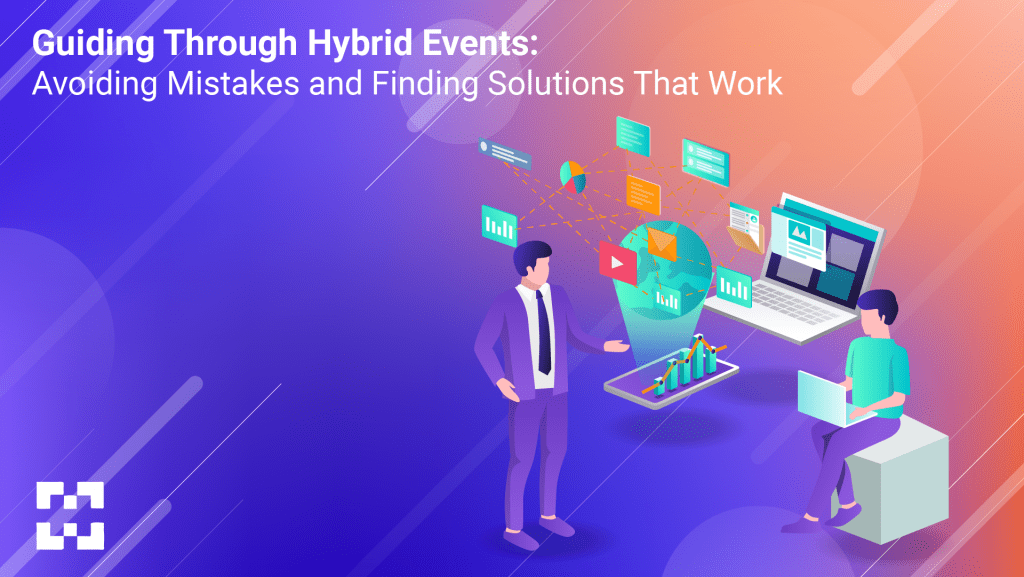
Introduction:
In the dynamic realm of event planning, the fusion of in-person and virtual components has given rise to the era of hybrid events. Offering unparalleled flexibility and inclusivity, these events have become a game-changer in connecting diverse audiences. This comprehensive guide delves into the intricacies of hosting a seamless hybrid event, shedding light on common pitfalls and offering practical solutions for an unforgettable experience.
The Essence of Hybrid Events:
As the business landscape evolves, so do the ways we gather and connect. Hybrid events, which seamlessly integrate in-person and virtual experiences, have emerged as a powerful solution. They offer a bridge between physical and digital spaces, catering to the diverse preferences of attendees.
Navigating Hybrid Event Challenges:
1. Strategic Planning and Time Management:
Successful hybrid events demand meticulous planning, acknowledging the distinct needs of both virtual and in-person participants. Allocating ample time for tasks like facilitating interaction and selecting the right platform is paramount.
2. Tailoring Content for Diverse Audiences:
Recognizing that what captivates an in-person audience may not translate equally well in the virtual realm is crucial. Incorporating interactive elements tailored to virtual attendees ensures engagement on all fronts.
3. The Rehearsal as a Crucial Step:
Regardless of experience, a rehearsal for a hybrid event is non-negotiable. Treating it as a pilot run helps identify potential issues, instilling confidence in the execution and ensuring a seamless event.
4. Balancing Event Duration for Engagement:
Acknowledging the shorter attention spans of virtual attendees is imperative. Crafting a well-paced agenda, infused with interactive elements and short breaks, maintains interest and participation throughout.
5. Inclusivity for Virtual Attendees:
Amidst the buzz of in-person interactions, it’s vital not to overlook the virtual audience. Strategies like displaying virtual attendees on large screens ensure an inclusive atmosphere, bridging the physical and digital realms.
6. Ensuring Robust Internet Connectivity:
The success of the virtual component heavily relies on a stable internet connection. Thoroughly checking the venue’s bandwidth guarantees a smooth streaming experience for virtual participants.
7. Selecting the Optimal Virtual Platform:
Researching and selecting the right virtual platform is a critical aspect of planning. Aligning platform features with event goals ensures a seamless and user-friendly experience for all attendees.
8. Facilitating Cross-Attendee Networking:
Bridging the gap between in-person and virtual networking is essential for a cohesive event. Utilizing breakout rooms and interactive tools allows both groups to connect, fostering a sense of community.
9. Enhancing Event Photography for Inclusivity:
Event photos should vividly capture the hybrid nature of the gathering. Instructing photographers to showcase virtual attendees on large screens and capturing screenshots from the virtual environment ensures an accurate representation.
10. The Power of Comprehensive Post-Event Communication:
Following up with all attendees, irrespective of their mode of participation, is pivotal. Post-event emails not only express gratitude but also serve as a valuable marketing opportunity for future engagements.
Real-World Examples of Successful Hybrid Events:
Explore inspiring case studies of companies that have excelled in executing hybrid events. Extracting lessons from their experiences provides valuable insights for planners aiming for seamless execution.
Conclusion:
Mastering the hybrid event experience demands a strategic blend of planning, adaptability, and inclusivity. This guide, void of pandemic references, serves as a roadmap for event planners, ensuring they unlock the full potential of hybrid events and create enduring memories for diverse audiences. Embrace these best practices to shape the future of events in a connected and inclusive world.





